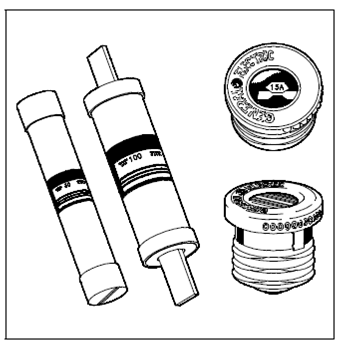Fuses:
A fuse is a device which protects a circuit from an overcurrent condition only. Fuse has a fusible link directly heated and destroyed through the current passing by it. A fuse holds a current- carrying element sized so in which the heat produced through the flow of normal current by it does not cause it to melt the element; thus, while an overcurrent or short-circuit current flows by the fuse, the fusible connect will melt and open the circuit. There are various categories of fuses in use that was show in the figure.

Figure: Types of Fuses
The plug fuse is a fuse which consists of a zinc or alloy strip, a fusible components enclosed in porcelain or pyrex housing, and a screw base. That type of fuse is generally used on circuits rated at 125 V or less to ground and has a maximum continuous current-carrying capacity of 30 amps.
The cartridge fuse is constructed along with a zinc or alloy fusible element enclosed in a cylindrical fiber tube along with the components ends attached to a metallic contact piece at the ends of the tube. This category of fuse is generally used on circuits rated at either 250 volts or 600 volts and has a maximum continuous current-carrying capacity of 600 amps.